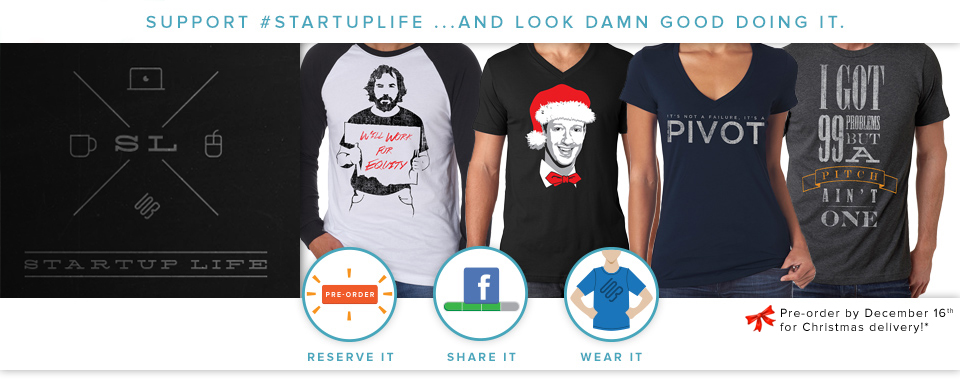Year-end lists were all over the Internet in the last week. Hot companies, trends, IPOs, cat videos…if it was put on the Internet this year, there was a list for it.
Except, we couldn’t find one specifically focused on startups outside of Silicon Valley. Well, that’s obviously a problem, because while the Valley has a lot going on, there are plenty of great startups kicking ass everywhere else.
So, we took at look at our Mattermark account* to find our favorite startups outside of Silicon Valley. Founded by Danielle and Kevin Morrill and Andy Sparks, Mattermark is a startup itself, but they are quickly becoming a trusted source of information for investors looking for deals.
With 5 content companies on the list, it looks like 2014 will be the year that content really becomes king. Two companies in the top 11 are specifically focused on helping brands market on Pinterest, and the buzz they’re generating may indicate there’s a big market for their services.
A word about our methodolgy: we specifically focused on startups outside Silicon Valley (obviously). We also focused primarily companies in the Seed and Series A stages of funding.

1. Upworthy is king of the buzz.
Upworthy gets so much attention, it’s almost hard to believe they’re not even 2 years old yet. The headline-focused content site focuses on “things that matter,” which means putting linkbait-y headlines on articles of importance so they’ll be shared more. Love ’em or hate ’em, Upworthy is probably the most buzzed-about early stage startup outside of Silicon Valley.
 2. Teespring crowdfunds custom apparel.
2. Teespring crowdfunds custom apparel.
Boston-based Teespring provides a platform to create and sell custom t-shirts without the upfront costs. It works like any other crowdfunding platform: put your t-shirt design up, determine your sales goal, and customers are only charged if the shirts are actually printed.
 3.Tailwind leads the way in Pinterest marketing.
3.Tailwind leads the way in Pinterest marketing.
We were super pumped to see our content partner Tailwind make an appearance in our Mattermark search. The New York and Oklahoma based company helps brands and marketers use Pinterest to the fullest. Make sure to check out their posts on social media marketing here at Nibletz and more on their blog.
 4. Prefundia lets you see Kickstarter projects before they’re kickstarted.
4. Prefundia lets you see Kickstarter projects before they’re kickstarted.
One of the most common pieces of crowdfunding advice is to already know who you’re first funders will be. Essentially, you need to create buzz before the project even goes live. Prefundia helps build that buzz by letting creators post their projects and get feedback before they launch.
 5. Twenty20.com brings your Instagram pictures off your phone and into real life.
5. Twenty20.com brings your Instagram pictures off your phone and into real life.
Formerly Instacanvas, Santa Monica-based Twenty20.com allows mobile photographers to sell their pictures in online galleries. The 2-year-old company is already well-known among Instagram photographers, and the recent rebranding seeks to make the whole experience even better.
 6. Spring.me proves that we’re not through with new social networks.
6. Spring.me proves that we’re not through with new social networks.
LA-based Spring.me is a social community based on interests. The unique thing about Spring.me is that, unlike other social networks, they’ve stated right from the beginning that sponsors and advertisers will also be incorporated into the community. The year old company isn’t Snapchat, but number 6 on our list ain’t too shabby.
 7. Written.com helps engage your customers.
7. Written.com helps engage your customers.
Austin startup Written helps content marketers and bloggers to build audience and authority. They facilitate content licensing, syndication, and sponsored content. In a world where every startup needs to have content, it’s no wonder Written is getting a lot of buzz.
 8. Jobzella is a career mega mall.
8. Jobzella is a career mega mall.
Cairo-based Jobzella puts all your job-seeking needs into one place, from skills classes to resume writing to actually seeking a job. They are still in beta and only recently closed their seed round, but it could be a big year for Jobzella.
 9. RapidMiner gives customers an edge with data mining.
9. RapidMiner gives customers an edge with data mining.
Boston startup RapidMiner provides software and services that allows businesses to optimize their data through predictive analytics, data mining, and text mining. The company is a little older than the others on the list, but their recent $5 million Series A hints that they are working on some bigger stuff.
 10. COINTERRA proves Bitcoin is going mainstream.
10. COINTERRA proves Bitcoin is going mainstream.
Austin-based COINTERRA is a “semiconductor engineering company.” They are designing cryptocurrency processors and systems on the bet that Bitcoin is going big. Considering the buzz around Bitcoin, it’s not surprising to see a Bitcoin company in the top 10 of our list.
 11. Ahalogy is cracking the Pinterest code for big brands.
11. Ahalogy is cracking the Pinterest code for big brands.
Cincinnati-based Ahalogy helps companies market content, specifically on Pinterest. Their algorithms and data tools help “crack the code” to visual content marketing, starting with Pinterest.
*Mattermark uses a propietary algorithm to determine individual scores for each company. While these companies ranked high in the Mattermark app, this list was also subject to our editorial decisions and is not a pure reflection of Mattermark’s rankings.


















